Japan 2025
Fukuoka to Fukuoka and in between
Konnichiwa, welcome back to the 2025 episode of Kanaloa's cruising! We left off in Raja Amput last year, 2024, and somehow the boat has managed to get Japan! Warren and various crew members spent the end of ‘24 and beginning ‘25 sailing Kanaloa here via Palau and The Phillipines. Morgan and I fortunately missed out on some 50 knot nights and a few days of wild weather between the Phillipines and Iki Island. Remember to click on the tracker on the website if you want to refer to our track
Instead we flew to Fukuoka in the middle of April where we met up with friends from NZ-Judy & Mark in a very nice hotel. We spent a day bullet training down to Nagasaki for a sober reminder of what an atom bomb is capable of. Clocked a speed of 247km/hr on the train, not that you’d know it’s such a smooth ride.
We then caught a hydrofoil to Iki Island, where we were to await the arrival of Kanaloa enroute from Okinawa. Checked into our hotel, pretty average sort of place and next morning wandered down to the wharf to meet Kanaloa and crew
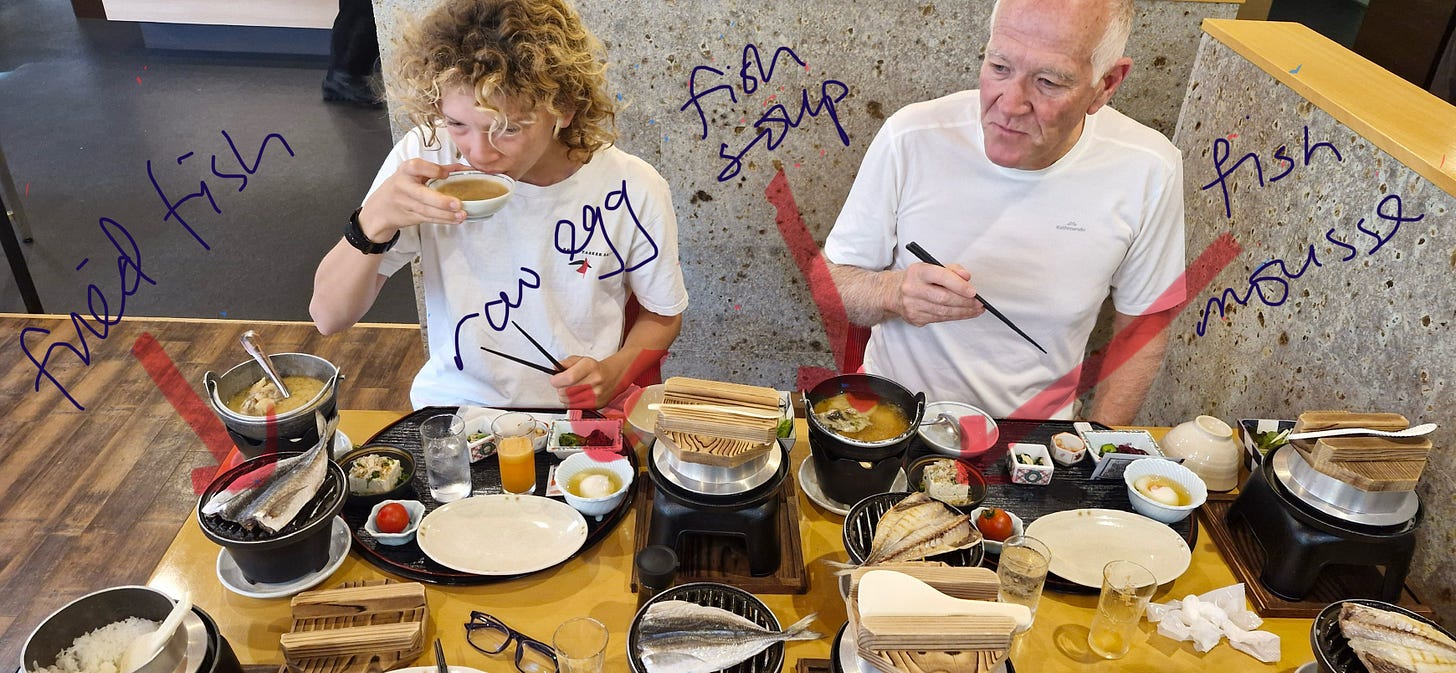
They arrived midday. After a joyful reunion with Warren, brother Doug, and a lovely young Swiss man - Rrrrramon, we had a few drinks and joined a potluck on shore for members of the Japan Rally. A total of 6 boats heading up to Alaska via Japan and Aleutians. We were planning to do that route this year but have now opted to stay the season in Japan rather than rushing through, and intend spending the majority of the time cruising the Inland sea between Honshu and Shikoku.
We stayed at Iki for a couple of more days, cleaning the salt drenched boat. I opened my knicker drawer to find it swimming in an inch of water. An open cockpit porthole one furious night had let buckets of water into our cabin. Just a small porthole, but the amount of water able to get through from a wave into a centre cockpit is scary.
Next day we joined a rally bus tour which was probably the best tour I've done. Straight to a sushi restaurant with an abundance of raw fish and instructions on eating sushi Japanese style. Basically stuff a seaweed sheet full of rice and fish, bunch it into a cone shape and snaffle it. No bamboo rolling mats here. Then on to monkey rock - can you seen the Baboon face?
Then to our first Onsen or Japanese bath house. This was extremely educational as there had been Onsen's at our hotels but not being versed in Onsen etiquette we weren't confident to use them. It’s a massive part of the Japanese way of life, and I love them.
You enter the ante room where you take off your clothes, (all of them, considered very unhygienic to enter an Onsen in anything but skin) then enter the Onsen itself where there are one or more shallow, very hot pools - but -before stepping into the pool you go to a cleaning station where you sit on a wee stool in a cubicle and shower. All cleaning products provided. No idea what I used as couldn't read the labels on the bottles. Once you are squeaky clean you slip into the hot bath- some are mineral others just heated water - and relax. Once you're ready to pass out you can opt to plunge into an icy bath and then back into the hot pool. When you're sufficiently boiled- back to the cleaning stations then out to the ante room where there are cubicles with a myriad of products for body, face, hair dryers etc etc. It’s sort of a spa treatment if you like. I was surprised that the Japanese are so comfortable bathing in the nick with each other. The Onsens are not unisex, thankfully, although I’m sure men wouldn’t mind sharing with women but not sure the other way round would apply.
For those of you who have experienced boat life, this sort of cleaning process is bliss. Boat showers are OK, but sometimes you just feel the need for a deep clean.
Also it's still a little chilly here at the moment. We are sleeping under duvets- a first in about 10 years. Bloody nice to not be sweltering in the 35 degrees of wet heat that we are so used to in SE Asia.
While we’re on ablutions I have to mention the toilets here. They are very high tech all encompassing cleaning machines. Complete with bidet, music, seat warmers, and coffee making functions. Well maybe not coffee making. Again it’s a bit hit and miss for us as all buttons are in Japanese and the first few times I came out with a soaking wet back but have now managed to master the water angle and pressure buttons. Quite a step up from SE Asian squat loos.
April 22 saw us motor sail to Horado, an island south of Iki. We arrived in the afternoon but the wharf where we were to berth was full, however 10 mins later we were directed to the other side by locals, secured lines and went in search of food and the local Onsen which was a short walk to hotel atop a hill. Bliss. We decided we might go and visit a local bar after this as the hotel had no drinking facilities That's right - a hotel without a bar, unheard of. The taxi driver dropped us off at an ordinary looking door- if you weren’t local you’d have no idea this led to a narrow, smokey bar. We managed to order a drink, not sure what, but it was good, so we had a few more and then we were presented with microphones.
My first ever foray into Karaoke, it has never appealed to me. Who wants to sit in a bar listening to dickheads trying to sing. Luckily the four of us are exceptionally good singers, so we spent a couple of hours belting out every ballad we could think of. Luckily the Japanese are very polite people who kept encouraging us, but were probably very relieved to see to see these four dickheads leave. Luckily there were only a 5 other people in the bar.
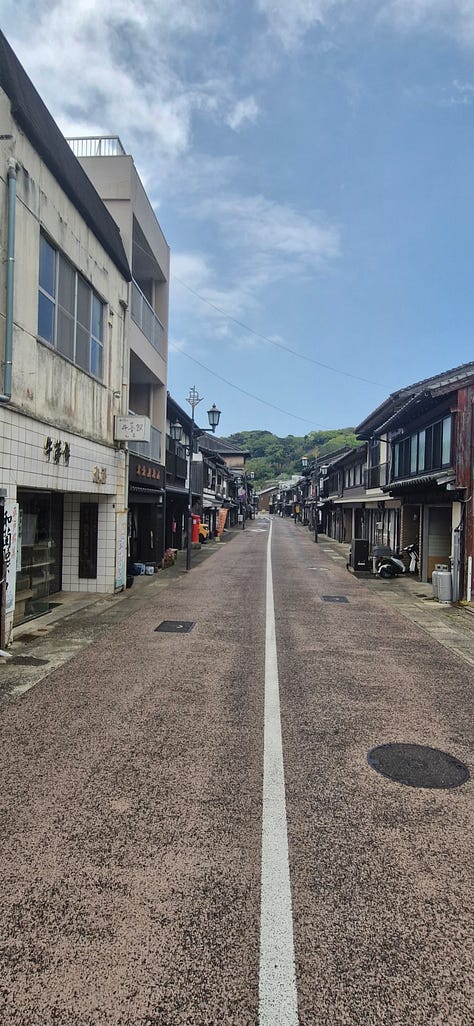
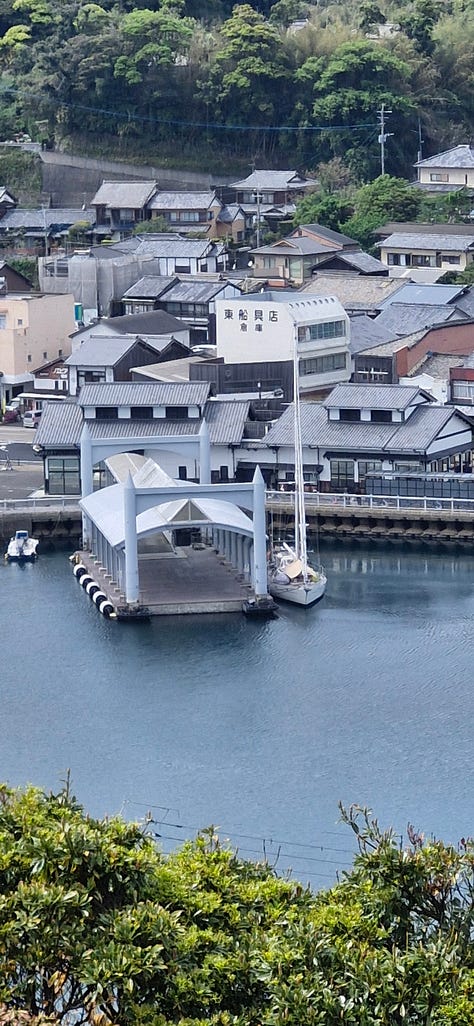
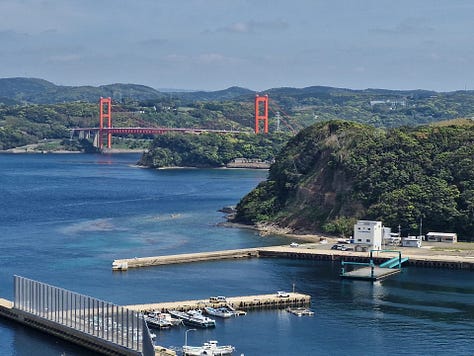
Horado was a funny little Island. Rich in history, the first Japanese port to welcome European traders, hence the huge Dutch influence, but it almost seemed deserted. Maybe it got busier in summer. We hired some ebikes and did a quick tour of the castle and town, a pretty wee place.
Friday we moved on to Kujukushima, actually on the mainland, north of Nagasaki, and the gateway to Saikai National Parks’ 99 islands. Only 4 of the islands are inhabited-Horado being one of them. Again upon arriving there was no where to berth but we were waved alongside a floating dock which we had to ourselves. The local council representative came down and charged up $1 NZ/night. Daylight bloody robbery.
We went for a few walks and again searched out a local Onsen. Told there was only one at the top of the hill at the Hotel Yumiharinooka . It was about 10km away so opted for a taxi and after a fairly steep climb arrived and were greeted with a spectacular view from the balcony of the hotel..
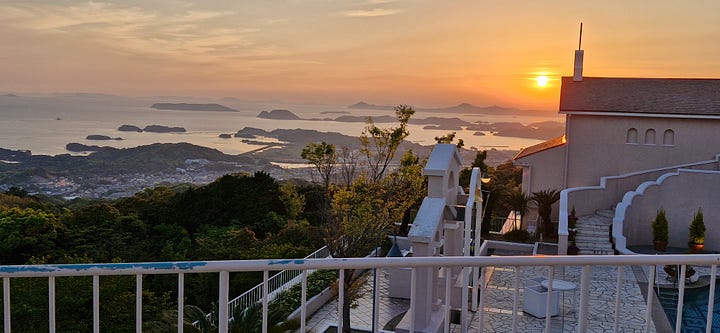

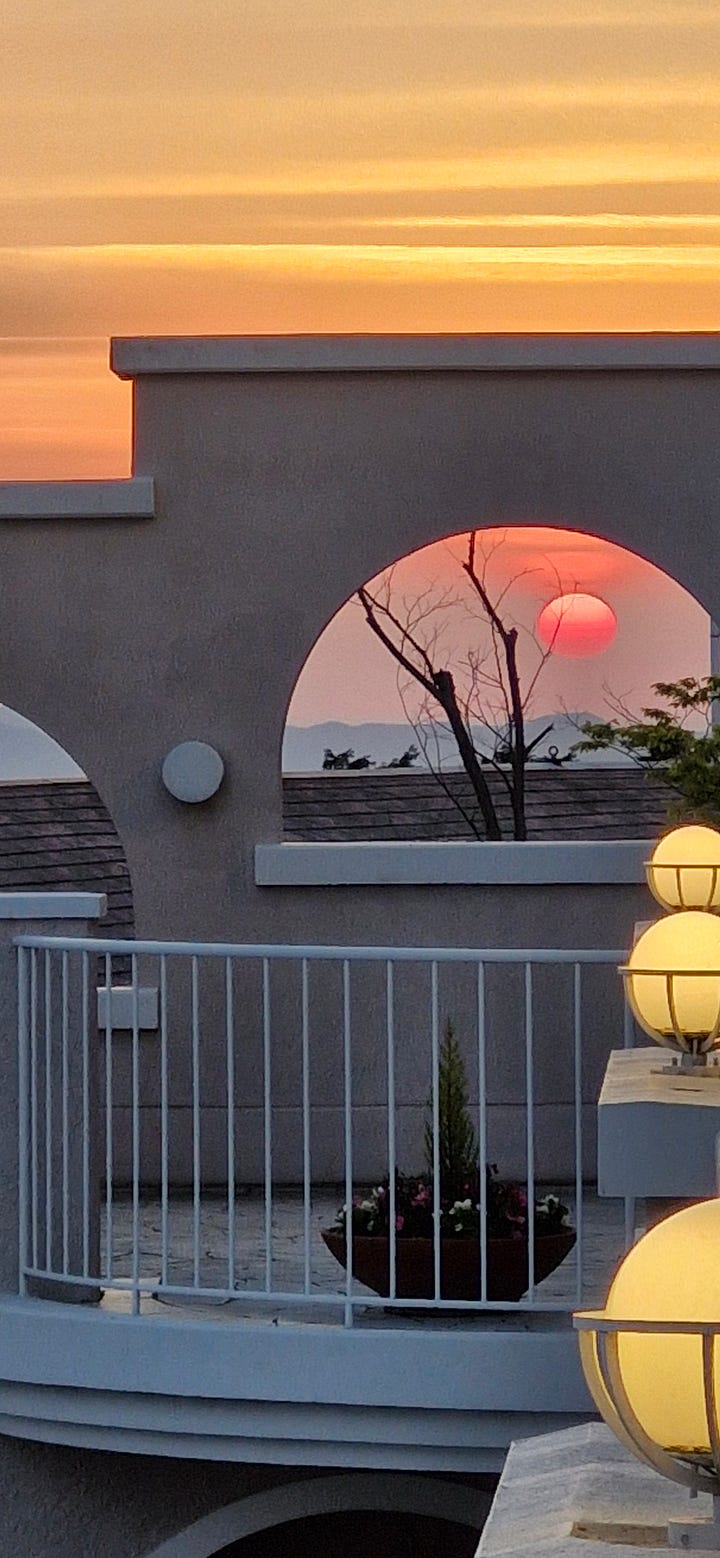
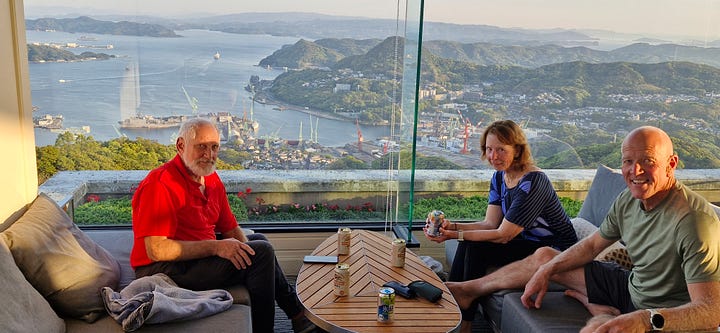
Just look at the photos. That is an outdoor pool in the photo not the Onsen. The Onsen was set inside large glass walls giving you the same view.
Japan is the land of vending machines, usually drinks. They are on every street corner with never a sign of graffiti or vandalism. Imagine what state they would be in NZ. But happy to say there was a selection of vending machines outside the onsen- complete with beer. Bliss. So we sat down and admired the beautiful sunset from the top of the hill.
Sun 27 we headed back north to Fukuoka. There is a marina here, albeit without water and power, Fukuoka being a well known yacht club having hosted the Louis Vuitton Americas Cup series in 2016. The city has a pop of to 1.5 million and is surrounded by hills, in fact I never really appreciated how mountainous Japan is. The cities tend to be squeezed into any flat land available. One island we visited had the hospital way up in the hills, purely because this is where you find cheaper real estate.
We said goodbye to Mark and Judy here in Fukuoka and awaited the arrival of Julianne and Des a week later.
We also bumped into Mari, a young Japanese woman who lives locally . We met her at the pot luck dinner in Iki, as she helps co-ordinate the Japan rally. Mari is a keen 420 sailor and was competing in a regatta at the yacht club. She organised for Morgan to join the local sailing dinghy squad for 3 days. Very fortuitous as Morgan is going to sail in the Bic skiff worlds in Osaka in July.
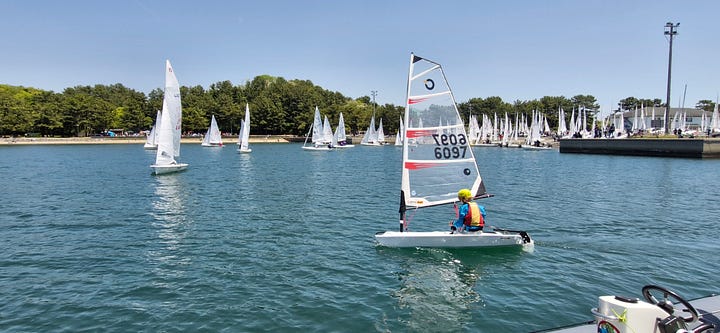
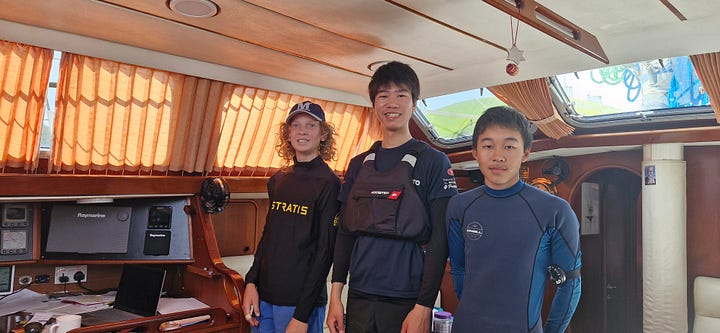
The coaches and kids were so welcoming . Morgan befriended a Laser sailor called Kai. He and his mum, Haruna visited the boat for an evening, she had great English as had been an exchange student in the USA. In the Japanese way they came with bags of gifts, and wanted to take us out to dinner the next night. It turned out Haruna’s friends owned a restaurant and we were treated to the most amazing sashimi meal, about 7 different courses, sitting up at the sushi bar having a great conversation with the Chef - who had fluent English having worked in the USA for years. It was an amazing meal. One course was sashimi layered over a peeled squid. Luckily he said we weren't expected to eat the squid as it was still alive- he did chop off some of the tentacles for me to try which were still alive and wiggling on my plate. Try picking them up with chopsticks! The tuna sashimi melted in your mouth, as it was from the belly-the best bit of the tuna.
WE had every sashimi possible, tuna belly, salmon, mackerel, squid, octopus followed by a huge snapper head cooked in a sweet sauce. It was a taste sensation, quaffed down with beer and warm Sake.
It felt like some Kind of Michelin dining experience.
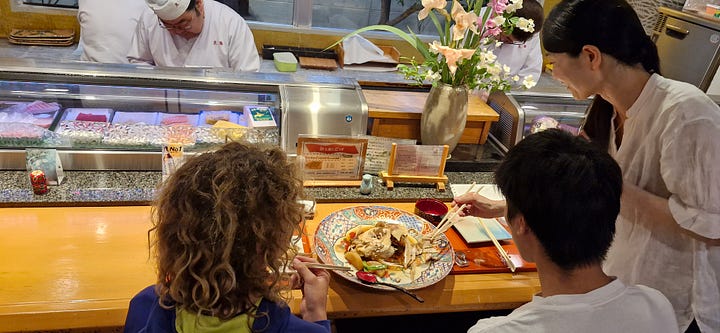
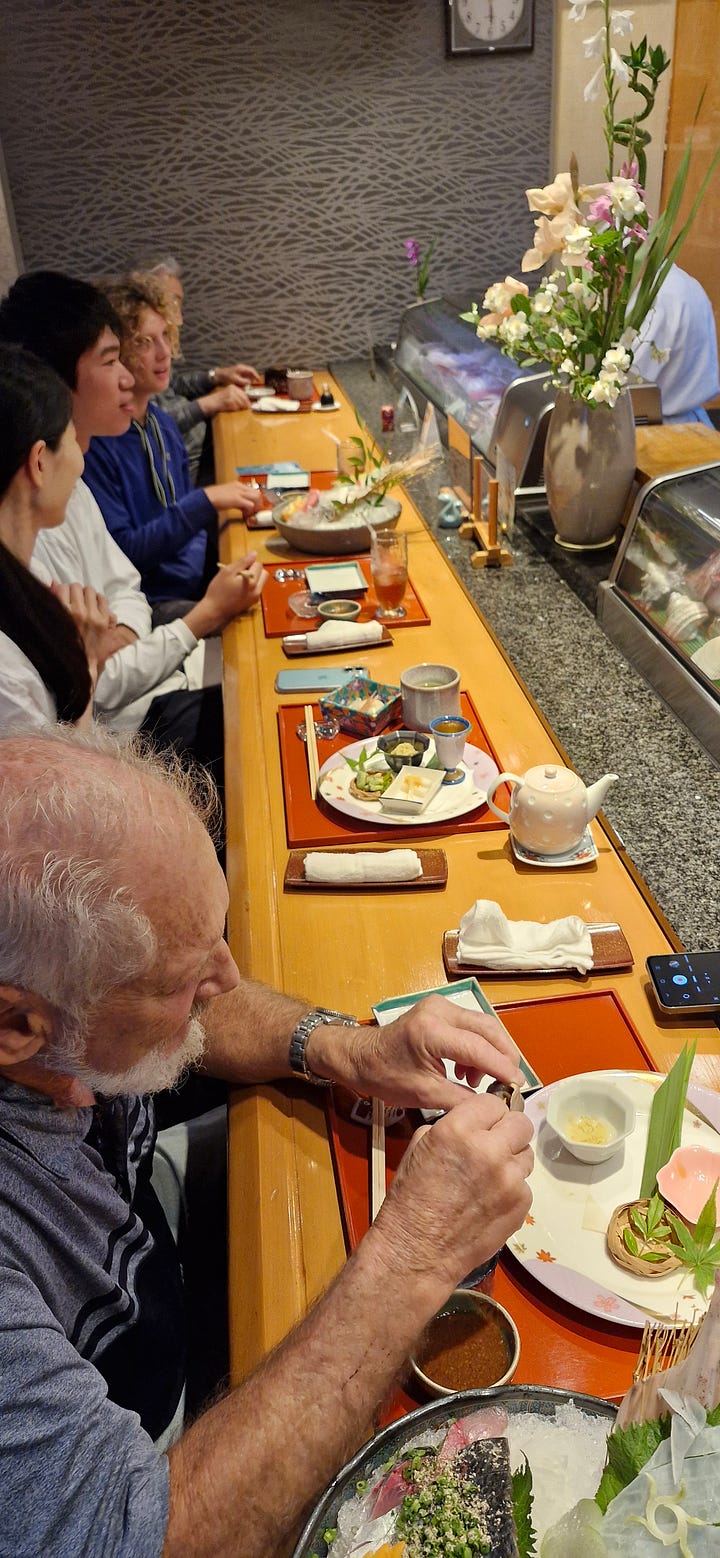
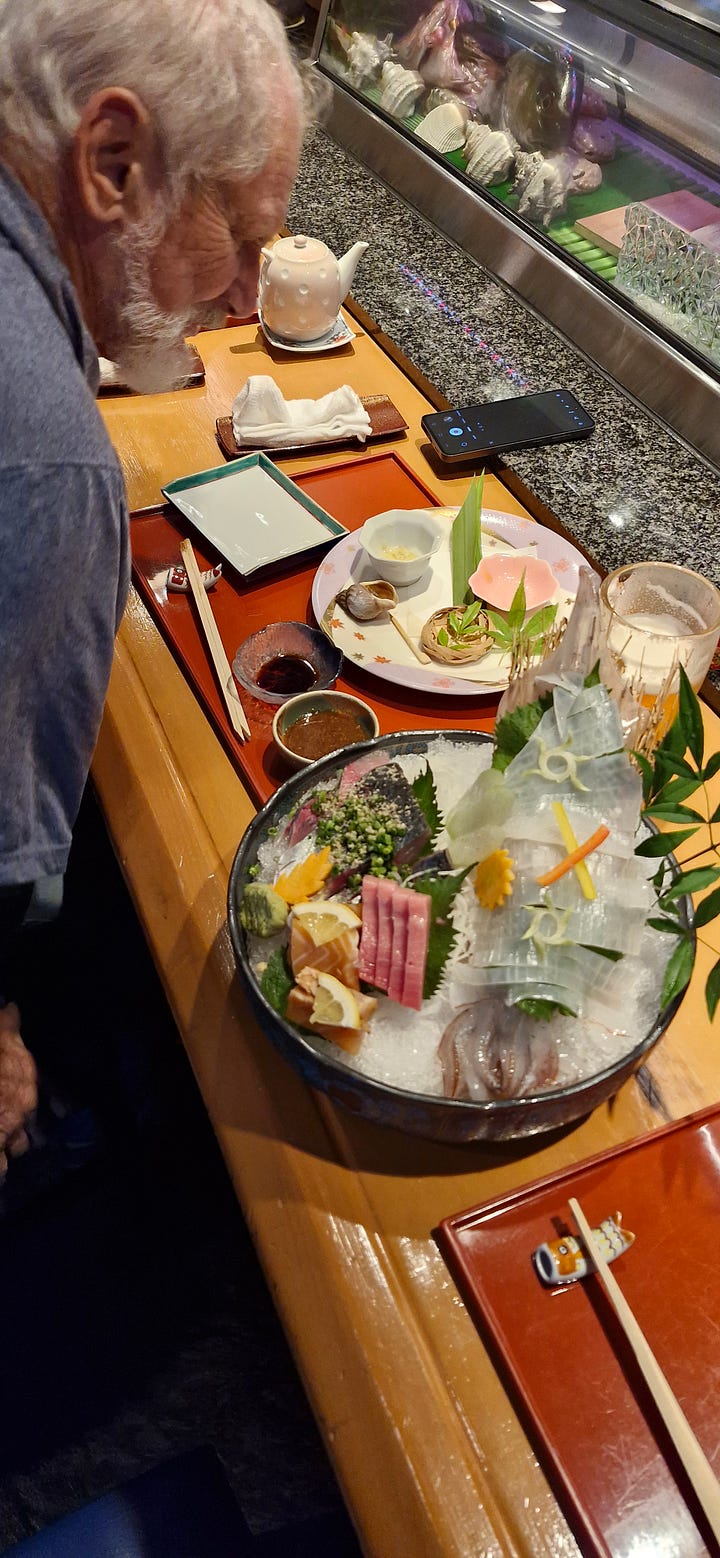

Not sure about you, but grocery shopping in foreign lands can be quite fun and an adventure. Although I loathe doing it at home, supermarkets in Japan are something else. Fresh food is of the highest quality, and often every item is individually plastic wrapped. Youve never seen so much plastic packaging as you do in a Japanese supermarket. Along with an abundance of plastic bottles from the vending machines found on every major corner, that poses a lot of waste plastic. There are no public rubbish bins but there is minimal littering too. Bottles and cans etc are recycled but rubbish collection is sorted into 2 bags, non burnable and burnable. They burn just about everything that’s not recyclable.
Anyway back to shopping. Fruit is really expensive, about $2 for one apple or one kiwifruit, $4 for an avocado, $45 for an average size watermelon, $25 for a wee rockmelon. There is little variety. Straw berries are the only cheap fruit as they’re grown locally. Meat and seafood is abundant and of the highest quality and sadly -have a look at the photo below-it’s still part of the Japanese diet.
There are a great selection of restaurants and cafes, and wine and beer, actually alcohol in general, is cheap. We are really enjoying Japan. Beautiful scenery, good food and lovely people. Till next time😉.


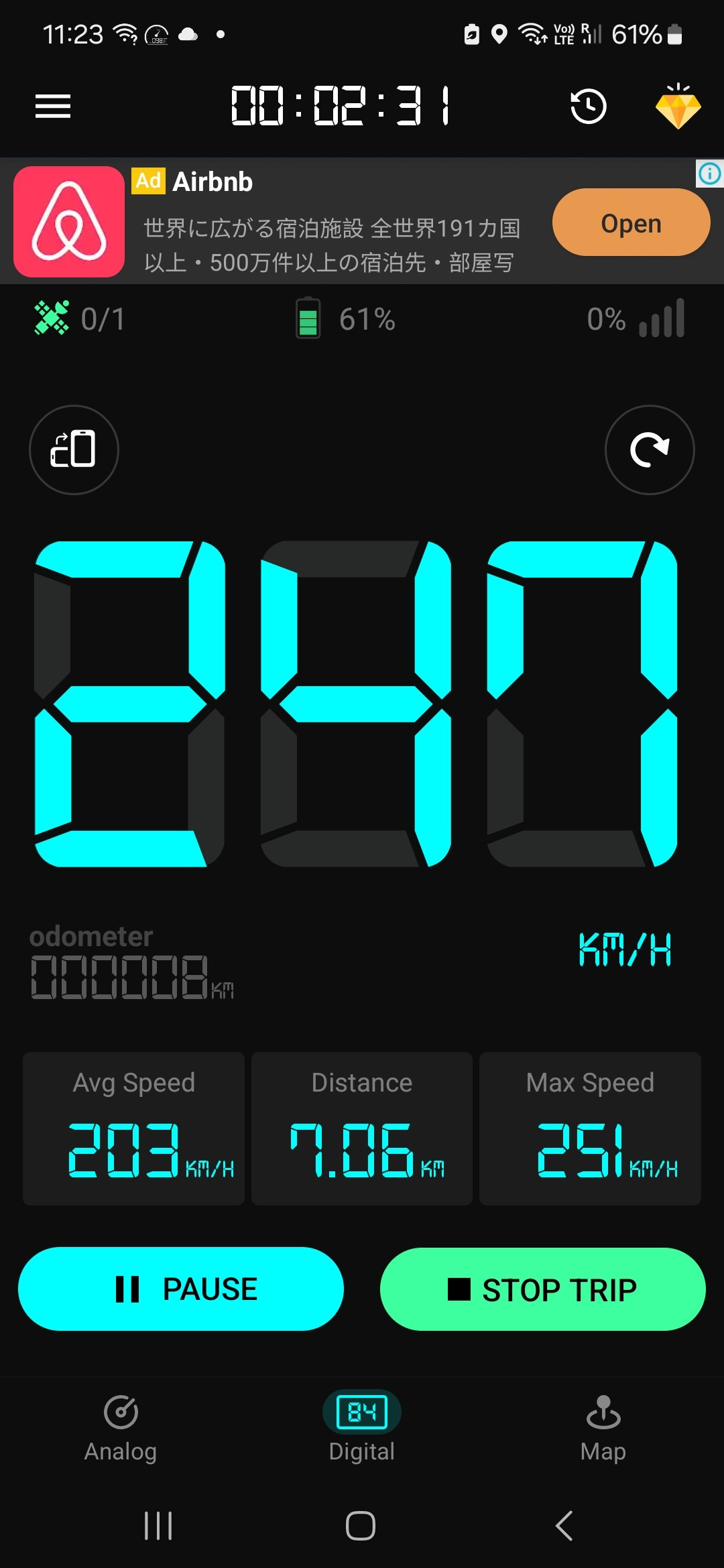
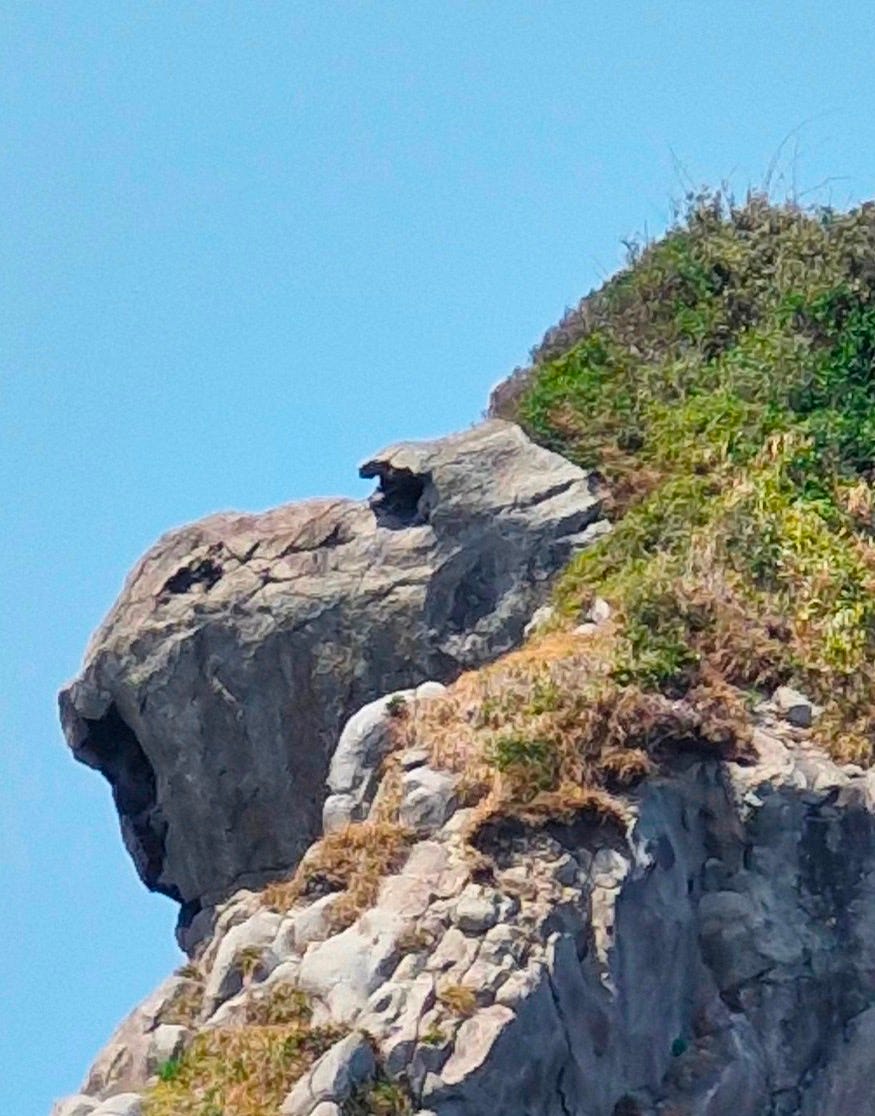
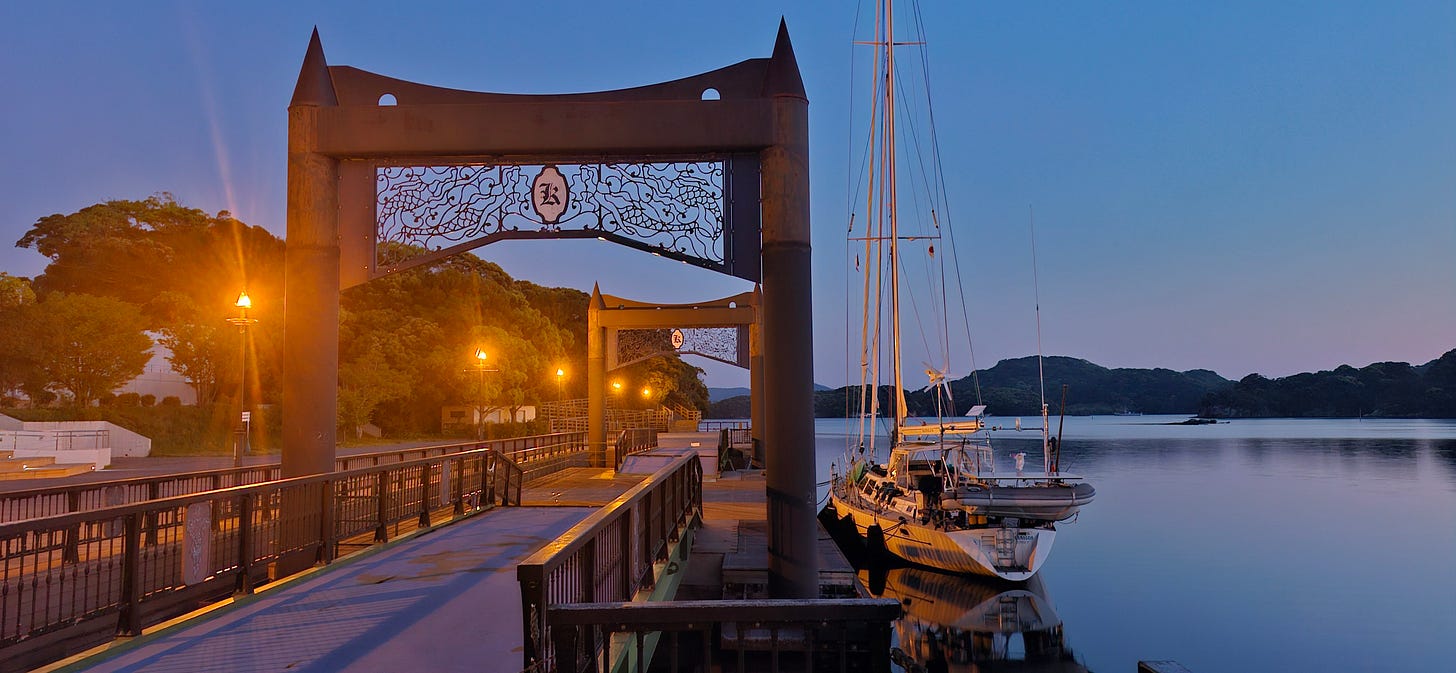
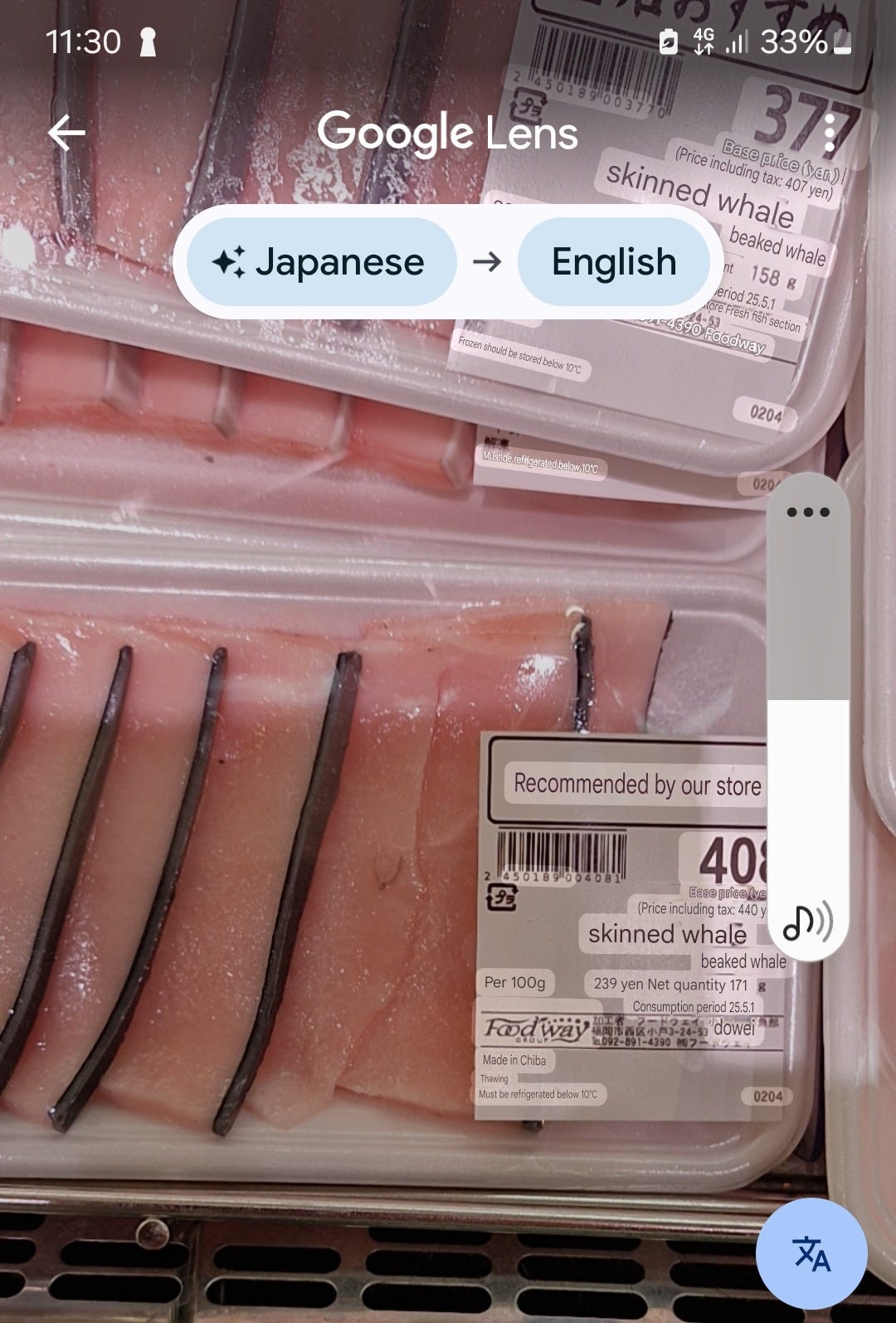
Fun to meet you half an hour ago, Trish. We on Pelagic are having many of the same experiences and impressions in Japan. I have to say I’m envious of the sashimi meal you described. I’d like to hear a little more about those squid tentacles!
Hi Trish, Warren and Morg.
So good to hear from you and great to see you have made it to Japan. Looks like an amazing place to explore and glad you are staying a season.
Can't wait for your next update.